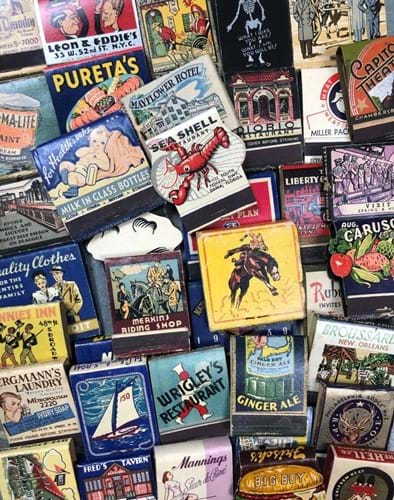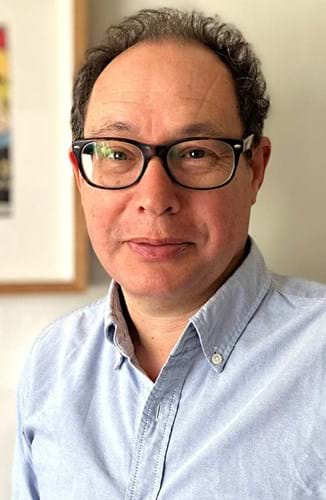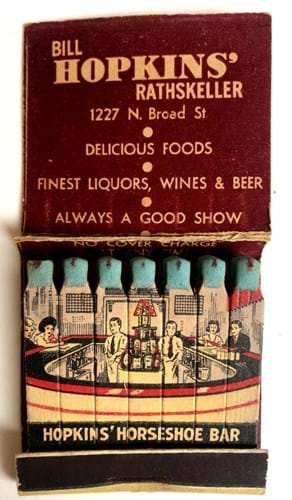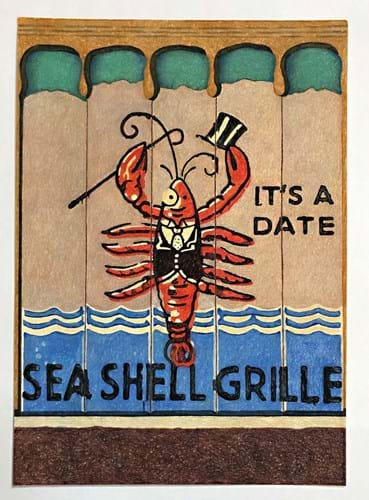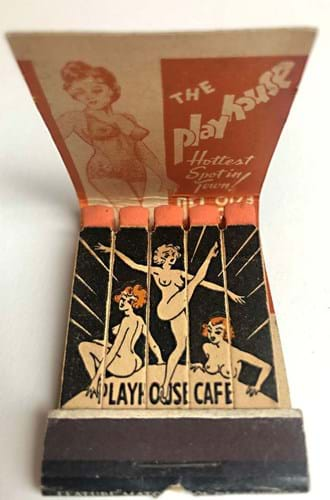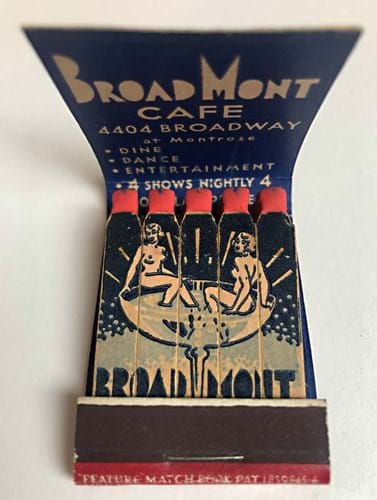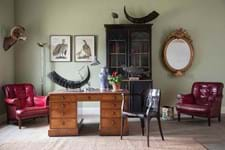Enchanted by their suggestion of smoky rooms and old Hollywood glamour, he started to build a collection and then began incorporating them into his art, which he exhibits every few years at Sims Reed Gallery in London.
ATG: What do you collect?
Aaron Kasmin: They’re called feature matchbooks.
They were usually used to advertise or promote businesses, and images are printed directly onto individual matches so the actual sticks have pictures on them.
They were made in the US between the 1920s and 50s and were dreamed up by art departments in companies with people I like to think were sort of like the Mad Men of their day.
Feature matches can be really imaginative and picture chefs, for example, where you strike their hat for the flame, or a lipstick where the tip of it ignites.
People who collect these are phillumenists, but I’m not actively part of a big community.
When did you first start collecting them?
In 2012. The first ones I bought were in a car boot sale in Normandy, which my daughter discovered. They were displayed in a shoebox and being sold by a French chef who worked near Times Square in New York (he was back home visiting his mother).
Where do you buy them?
Feature matchbooks are 90% an American item, and now I own over 500. For the most part I order them from overseas off sites like eBay. That’s getting a little more complicated now, since they are considered pyrotechnics. Shipping can be £35 or more but that’s more than I would usually spend on any particular example.
What role do they play in your art?
After collecting for a few years I started drawing the matchbooks. I’m also an abstract artist, but people aren’t as keen on those pictures as they are on these drawings.
I use chalky pencils to reproduce the pastiness of the matchbook and capture the spirit of the original. By drawing them I feel I’m bringing them to a wider audience. Not even many Americans know about them.
How often do you exhibit them?
About every two years. I don’t do more than about 20 a year because they are so time consuming.
My last exhibition at Sims Reed Gallery in London (where I’ve exhibited these pictures since 2016) was Strike a Light and was really successful.
It’s a great setting since the gallery also sells limited edition art books and it’s slightly quaint like going into an old bookshop. I think the pictures do better there than they would in a white-wall gallery. Almost all of the pictures sold.
Do you sell the matchbooks along with the pictures?
No, I would never sell any part of my collection.
It is a strange collection which has fed my art, even though I had no expectations of it. Somebody once wanted to buy one of my drawings only if I was willing to sell the matchbook it depicted, so I let the sale go, which may seem a bit excessive but I’ve never seen another example of this matchbook again. Thankfully someone else bought the drawing so I felt vindicated.
What do you think is the attraction of the matchbooks and the pictures they inspire?
They are really captivating. They remind me of Hollywood movies and another age - Lauren Bacall, Raymond Chandler, film noir.
As far as the pictures go, no-one else is really doing these although some do matchbox labels or other sorts of advertising like posters. Those were made to last. Matches are a bit different, but some clever guy came up with the idea that people would take these home from the businesses that advertised on them - dry cleaners, hotels, I have one from the Russian Tea Room in New York City - and chuck them in an ashtray. An incredible number of them are still around and intact.

An example from Aaron Kasmin’s feature matchbook collection of a Russian Tea Room Restaurant matchbook from New York.
What is the most you have paid for a single matchbook?
About $50 for a matchbook showing the backs of an audience watching a film from a cinema in Chambersburg, Pennsylvania. Different examples can go up to about $180, though. There’s one with Hitler on the front where the matches are bombs and a very racist propaganda one produced after Pearl Harbour of a Japanese commandant - those aren’t for me.
But also Planters Peanuts have one featuring ‘Mr Peanut’ which can be $150 if you’re even lucky enough to find it.
Do they require special care?
No. Today they won’t even ignite. If you try to light one it crumbles. I keep them in a few filing cabinet drawers in my home. They do smell slightly of sulphur if you have a lot.
Are matchbooks the first items you collected?
The first thing I ever collected was sweet wrappers. When I was a child I spent all my money on sweets and someone suggested I collect the wrappers. Then my first serious collection was silver lustre pottery, also when I was boy. I had started drawing and I needed something to draw. My granny had some and I built up quite a collection. Now I have only about 30.
Since then I’ve collected fossils, and most recently kitchen whisks, which I have displayed on the kitchen wall. I’ve got the bug.


